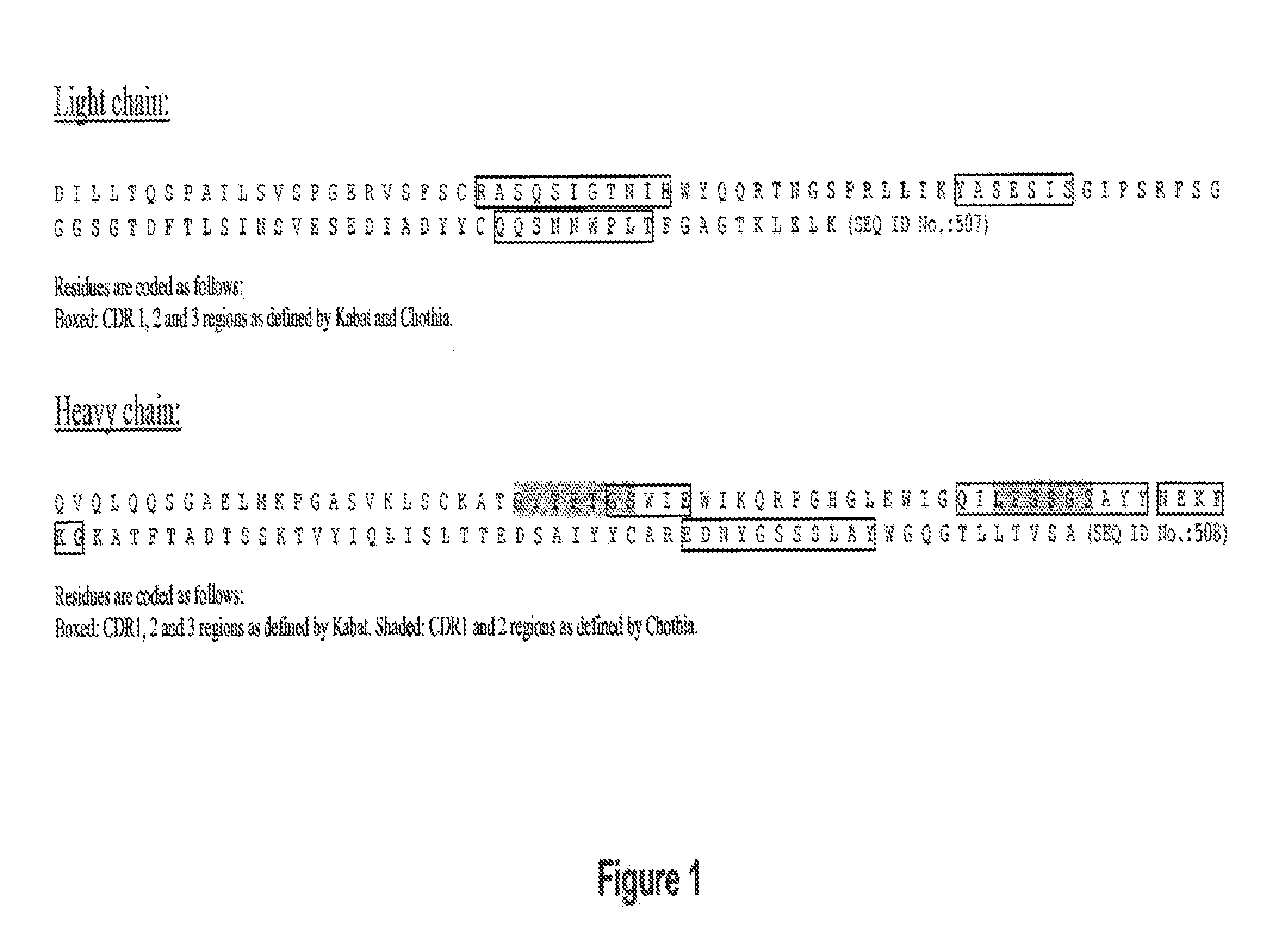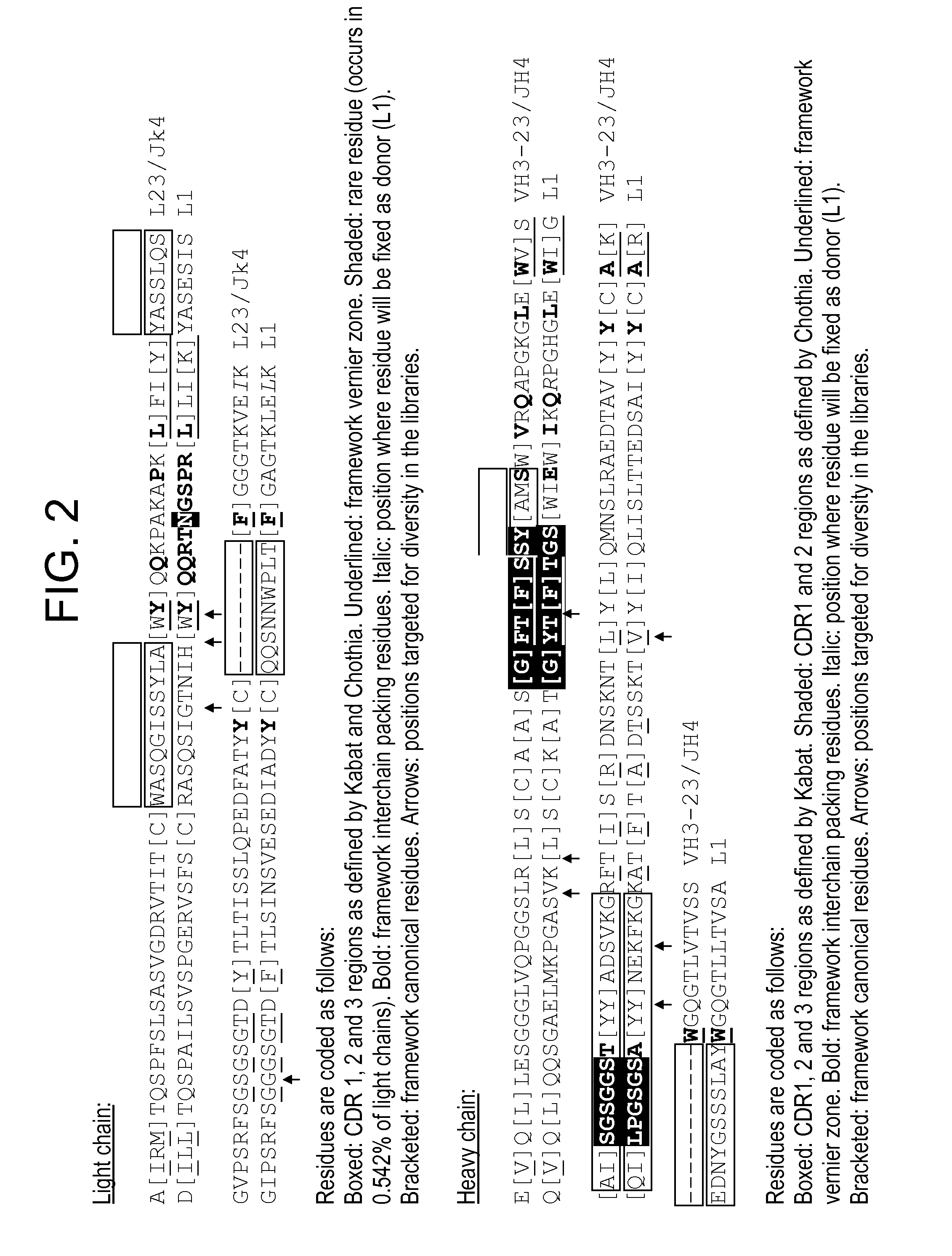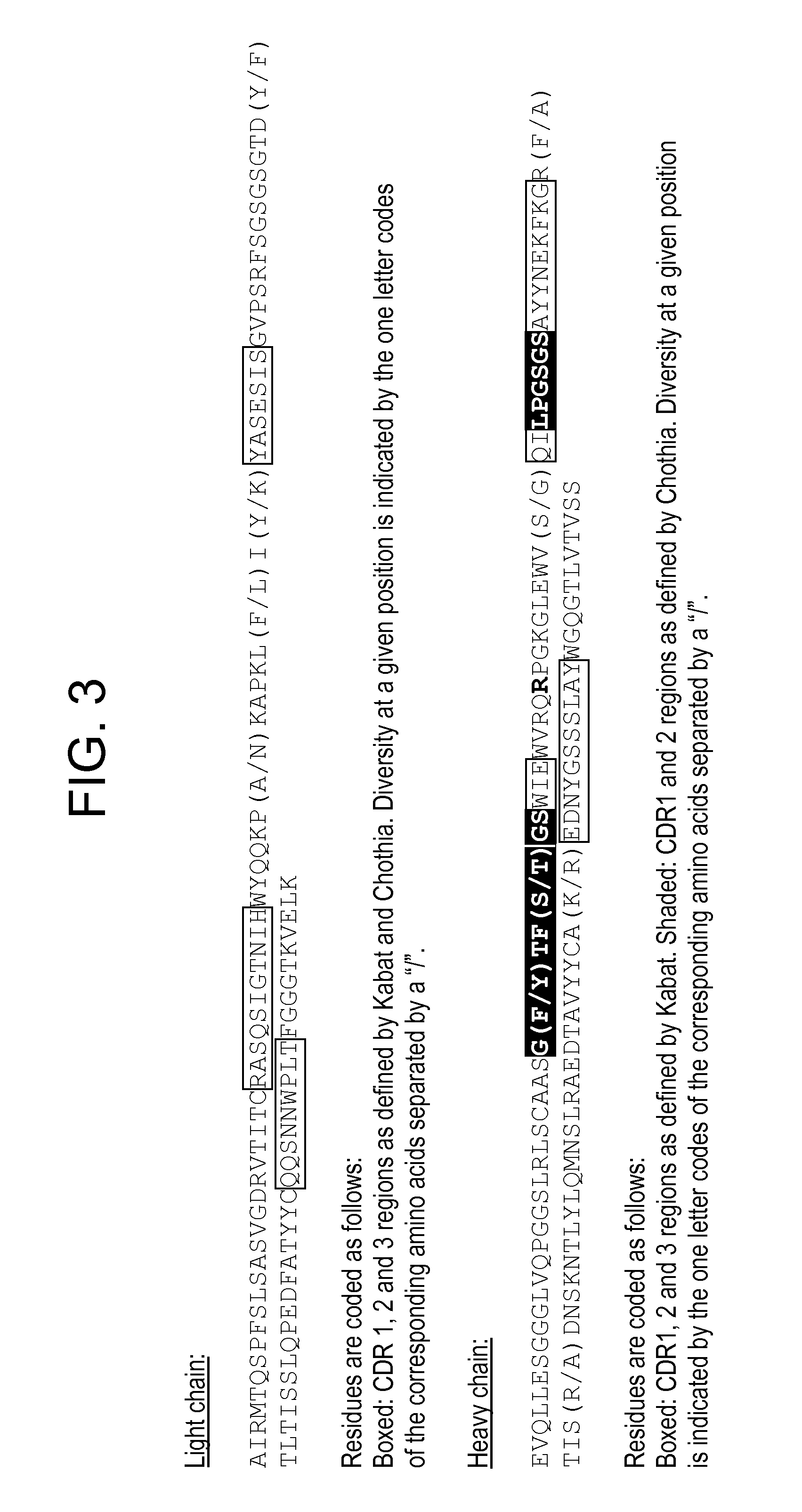Humanization of antibodies
a technology of human antibody and antibody, applied in the field of humanizing antibodies, can solve the problems of undesirable immune response, limited selection of human template supporting donor cdrs, and use, especially in therapy, and achieve the effects of reducing or eliminating the body's immune response, efficient and rapid engineering of antibodies, and promising results
- Summary
- Abstract
- Description
- Claims
- Application Information
AI Technical Summary
Benefits of technology
Problems solved by technology
Method used
Image
Examples
embodiment 15
[0331]18. A population of cells comprising the nucleic acid sequences of
embodiment 17
[0332]19. A method of identifying a humanized antibody that immunospecifically binds to an antigen, said method comprising expressing the nucleic acid sequences in the cells of embodiment 17 and screening for a humanized antibody that has an affinity of 1×106 M−1 or above for said antigen.
embodiment 18
[0333]20. A method of identifying a humanized antibody that immunospecifically binds to an antigen, said method comprising expressing the nucleic acid sequences in the cells of embodiment 18 and identifying a humanized antibody that has an affinity of 1×106 M−1 or above for said antigen.
PUM
| Property | Measurement | Unit |
|---|---|---|
| affinity | aaaaa | aaaaa |
Abstract
Description
Claims
Application Information
 Login to View More
Login to View More - R&D
- Intellectual Property
- Life Sciences
- Materials
- Tech Scout
- Unparalleled Data Quality
- Higher Quality Content
- 60% Fewer Hallucinations
Browse by: Latest US Patents, China's latest patents, Technical Efficacy Thesaurus, Application Domain, Technology Topic, Popular Technical Reports.
© 2025 PatSnap. All rights reserved.Legal|Privacy policy|Modern Slavery Act Transparency Statement|Sitemap|About US| Contact US: help@patsnap.com



